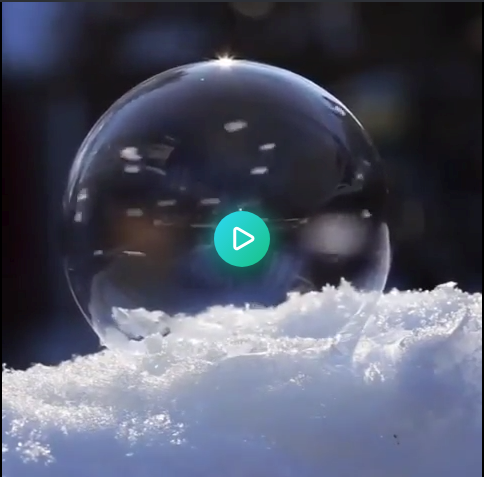Why does the bubble start freezing at the top ?
Tau.Neutrino said:
Freezing bubble *Why does the bubble start freezing at the top ?
Nice video by the way. Looking closely, it does start high (from equator to 3/4 of the way up) before it starts low, by a little bit.
At a guess, because the liquid layer is thinner near the top and thicker at the bottom. Thicker layers take longer to freeze.

Follow on question. Is the freezing up high from seed crystals that have been picked up from the surface during the placement of the bubble?